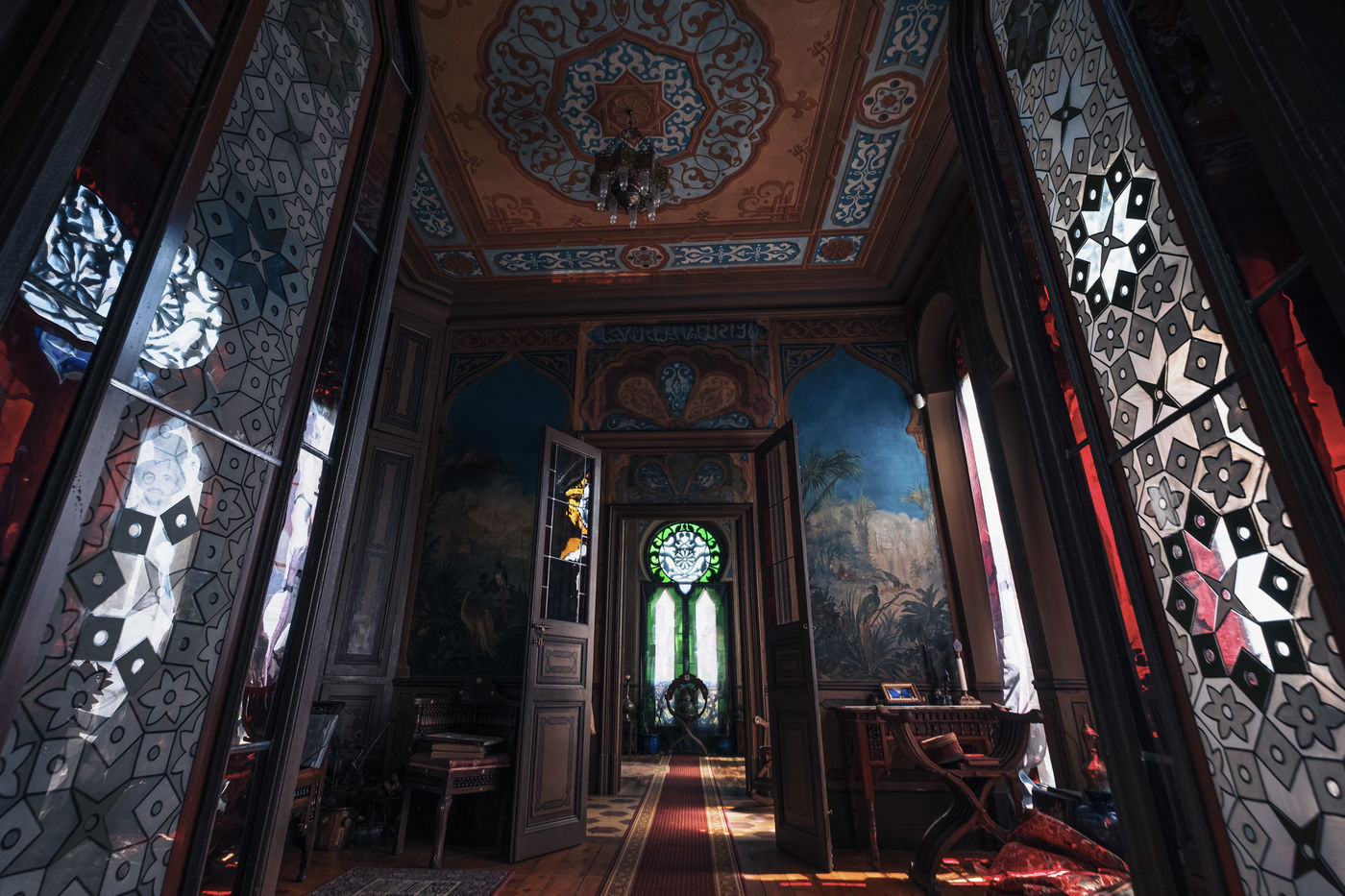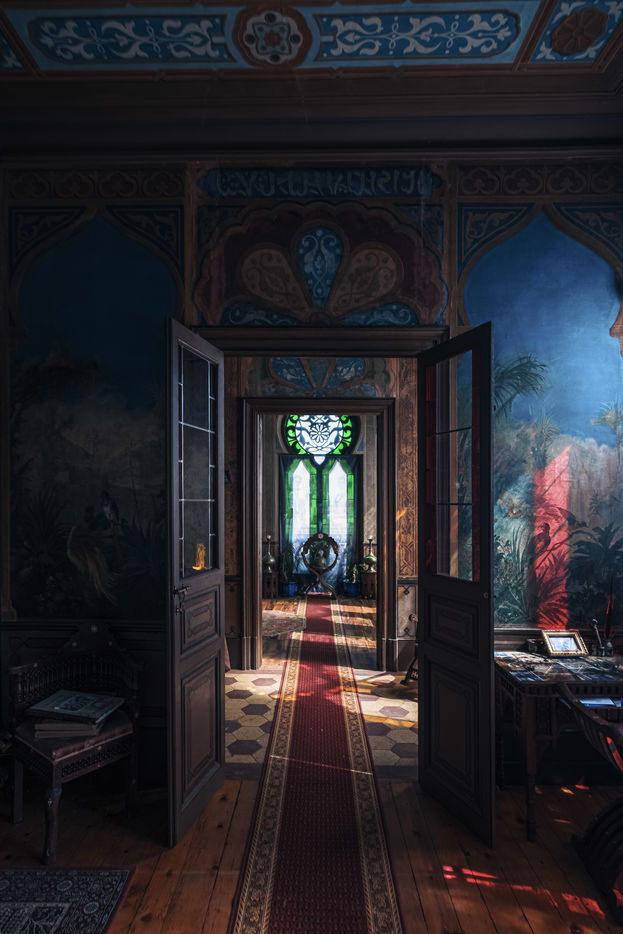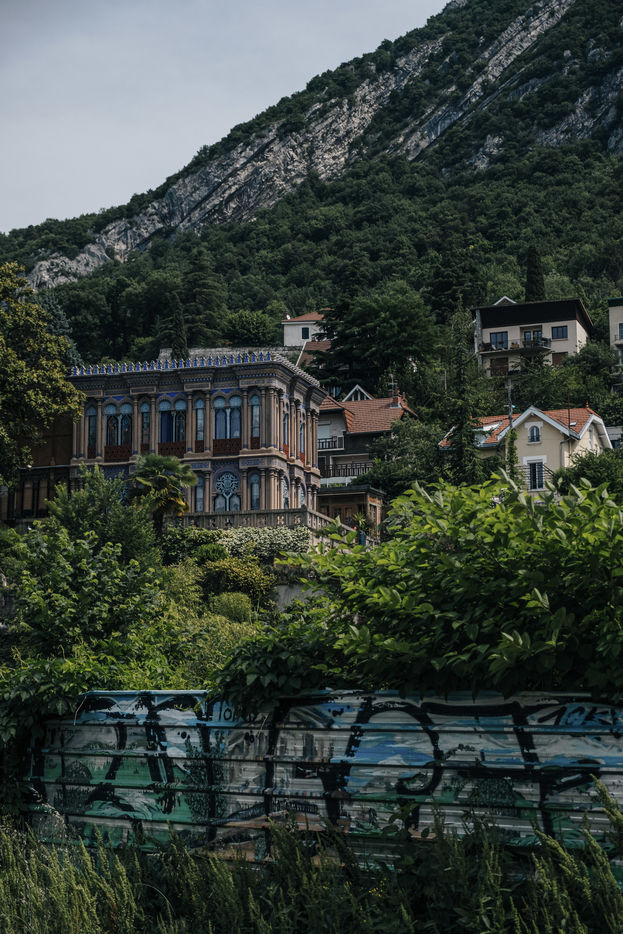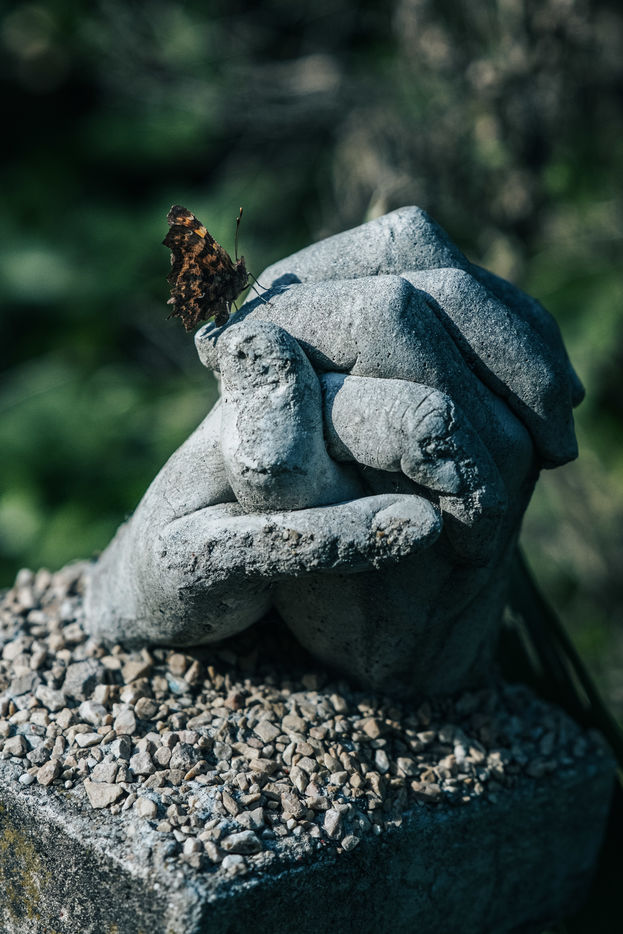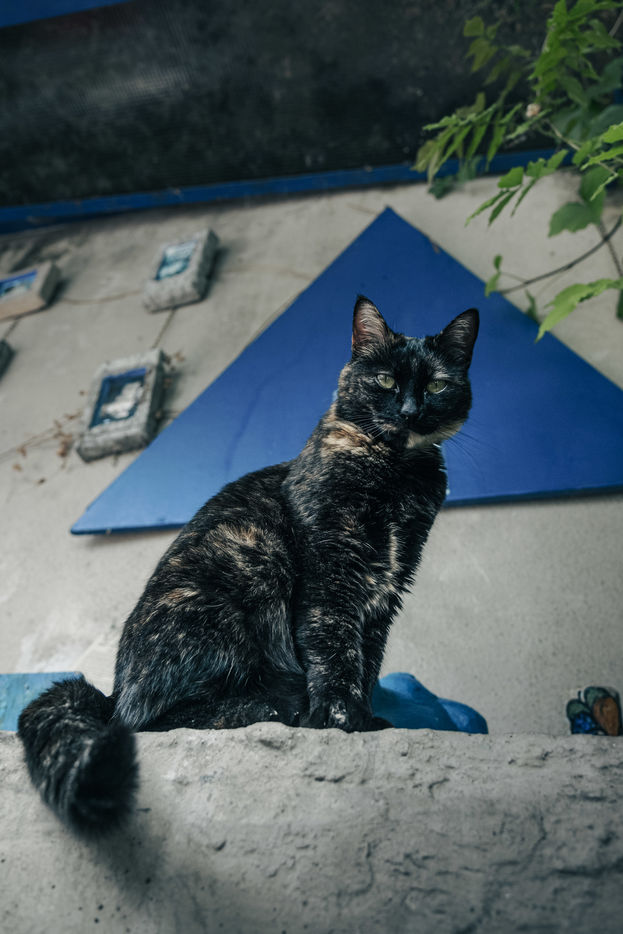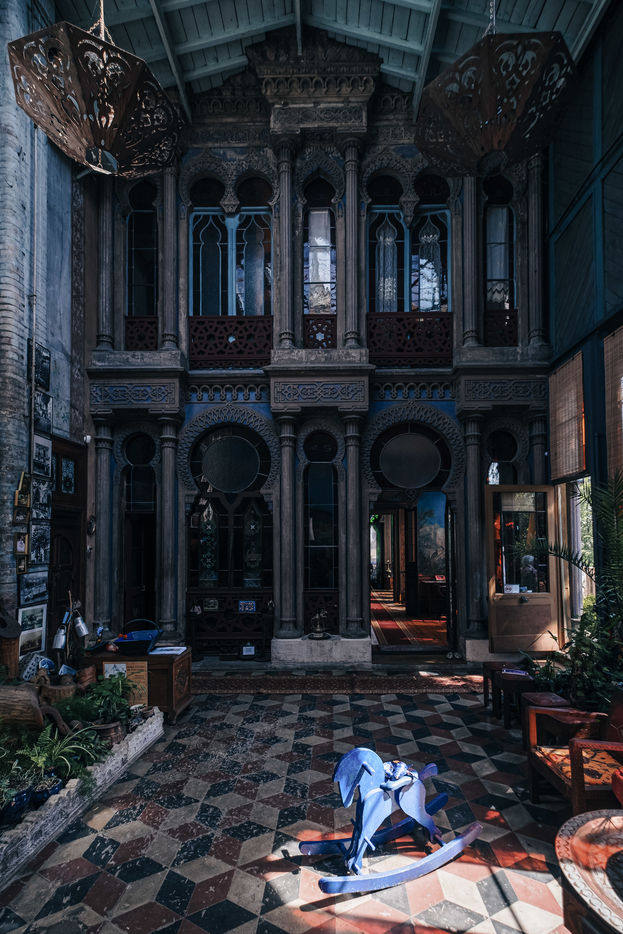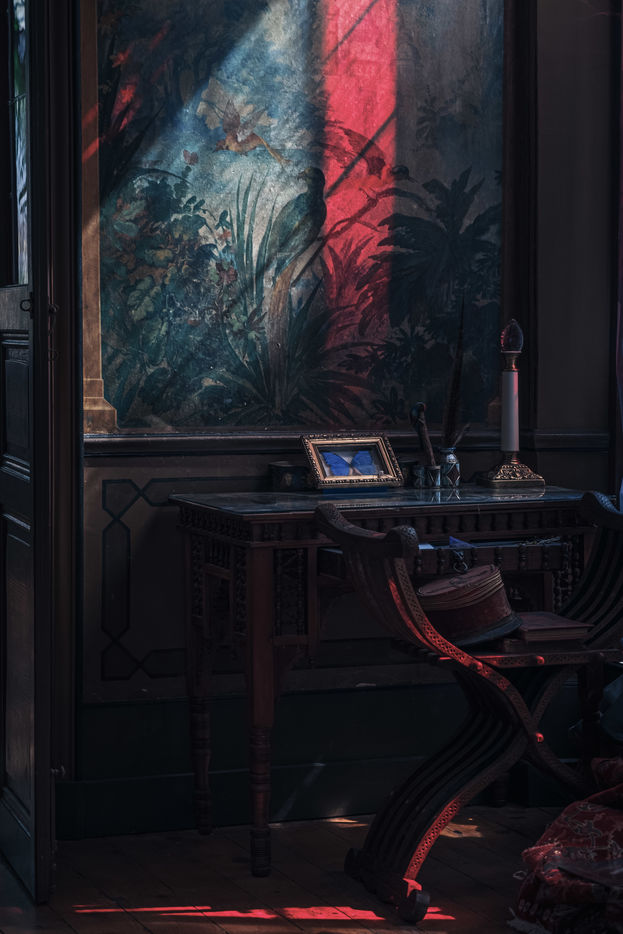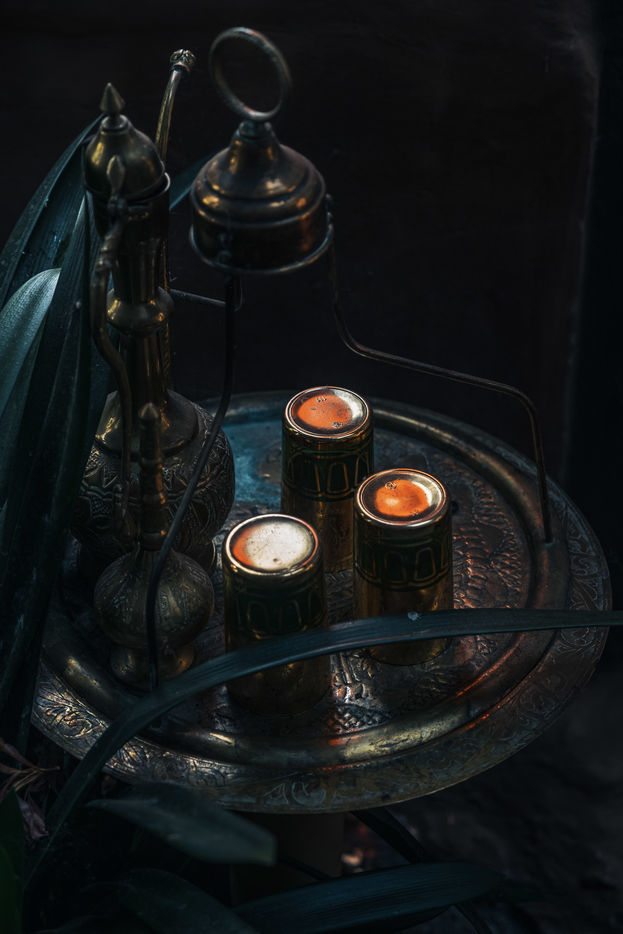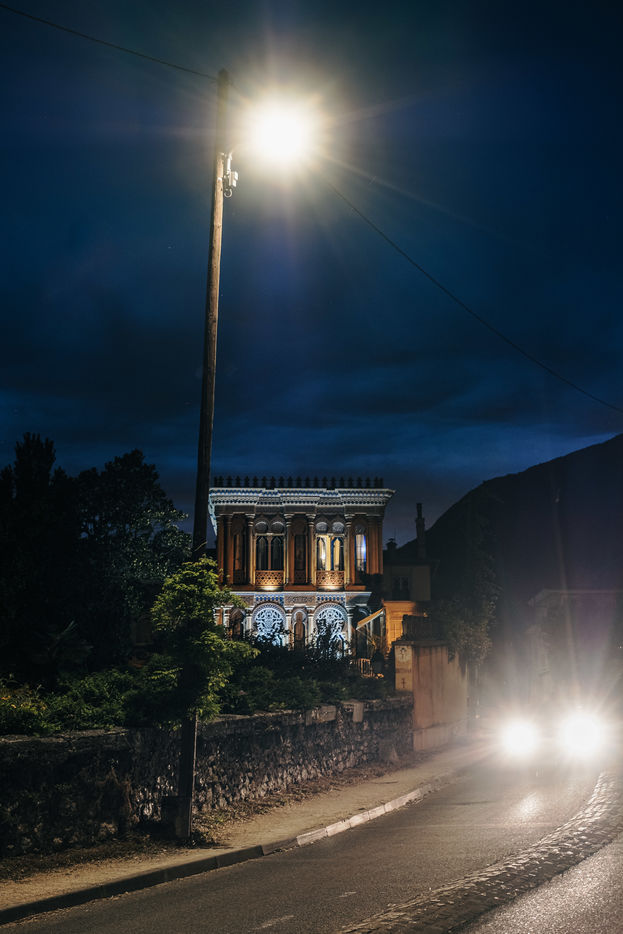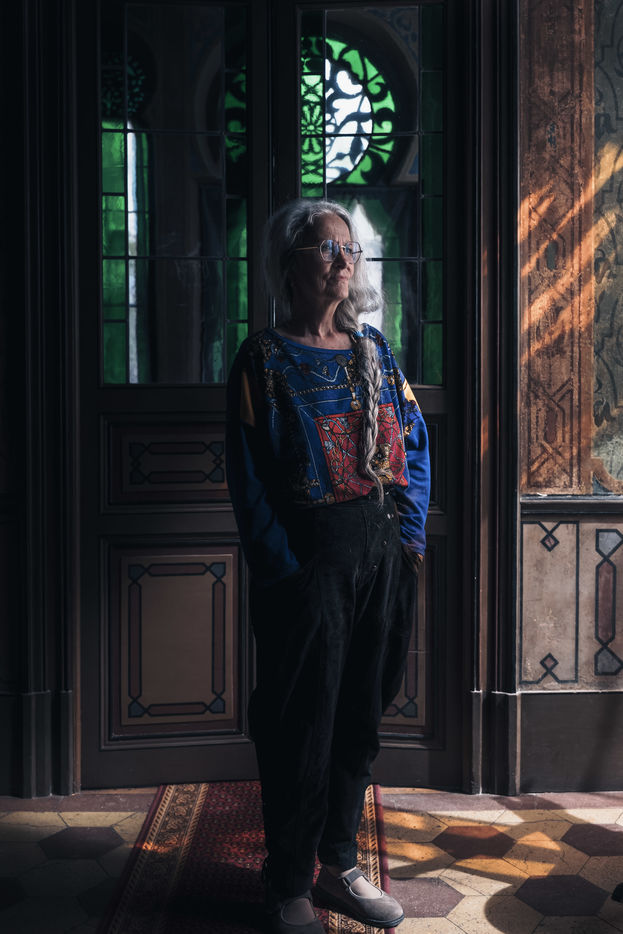Pour accéder à la série en entier, vous devez vous logger ou demander un compte Hans Lucas en cliquant ici.
LA CASAMAURES, JOYAU DE L'ORIENTALISME DU XIXème SIECLE
La Casamaures, est une villa au style Néo-Mauresque située à Saint-Martin-Le-Vinoux, sur les pentes de la Chartreuse en banlieue de Grenoble.
Construite au milieu du XIXème siècle par un notable Grenoblois, Joseph Jullien dit Cochard, en hommage à son épouse, c'est l'un des rares témoignage du mouvement européen de l'Orientalisme qui traversait l'époque et fascinait notamment peintres écrivains, et musiciens (ex: Berlioz). On y retrouve de nombreux attributs orientaux et décors inspirés de l'art ottoman. Colonnades, moucharabiehs, vitraux et autres arabesques, ainsi que des tapisseries uniques peintes à la main, sont les témoins d?un Orient fantasmé. On y trouve même la façade authentique du pavillon de la
Turquie à la première exposition Universelle de Paris en 1855, une façade aux décors de bois peint, tel les yalis du Bosphore, derrière laquelle se trouve un impressionnant jardin d'hiver. (de 9m de hauteur). L'architecture est également un amalgame improbable de techniques novatrices. L'invention du pigment artificiel bleu d'outre-mer, inspiré du bleu d'Egypte, fut développé pour ses trois façades de "pierre factice", mais surtout ses façades à colonnades sont parmi les premiers éléments/moulures préfabriquées dans l'histoire de la construction, grâce à l'utilisation de ciment naturel, matériau nouveau, produit dans le voisinage du monument historique en « or gris ».
Ruiné, le bâtisseur idéaliste dû s'en séparer en 1878, et le bâtiment tomba progressivement en ruine jusqu'en 1981. Le temps, les guerres et les squatteurs auront eu raison de vitraux et de papiers peints d'origine, que la propriétaire actuelle, Christiane Guichard, et des passionnés s'emploient à restaurer progressivement. Longtemps mal-aîmée des riverains, trop exubérante, de mauvais goût, ou trop « exotique », la demeure retrouve de sa superbe au gré des restaurations, et de l'accueil des projets culturels de l'association.
LA CASAMAURES, JEWEL OF ORTIENTALISM OF THE XIXth CENTURY
La Casamaures is a Neo-Moorish style villa located in Saint-Martin-Le-Vinoux, on the slopes of the Chartreuse in the suburbs of Grenoble, in the French Alps.
Built in the middle of the 19th century by a notable Grenoble man, Joseph Jullien, known as Cochard, as a tribute to his wife, it is one of the rare testimonies of the European movement of Orientalism which crossed the period and fascinated painters, writers and musicians (e.g. Berlioz). It contains many oriental attributes and decorations inspired by Ottoman art. Colonnades, moucharabiehs, stained glass windows and other arabesques, as well as unique hand-painted tapestries, are witnesses to a fantasized Orient. There is even the authentic facade of the Turkish pavilion at the
There is even the authentic facade of the Turkish pavilion at the first World Exhibition in Paris in 1855, a facade with painted wooden decorations, like the yalis of the Bosphorus, behind which is an impressive winter garden (9m high). The architecture is also an unlikely amalgam of innovative techniques. The invention of the artificial overseas blue pigment, inspired by Egyptian blue, was developed for its three "fake stone" facades, but above all its colonnaded facades are among the first prefabricated elements/mouldings in the history of construction, thanks to the use of natural cement, a new material produced in the vicinity of the "grey gold" historic monument.
In 1878, the idealistic builder was forced to give it up and the building gradually fell into ruin until 1981. Time, wars and squatters have taken their toll on the original stained glass windows and wallpaper, which the current owner, Christiane Guichard, and other enthusiasts are gradually restoring. For a long time, it was resented by local residents for being too exuberant, in bad taste or too "exotic", but the house is now regaining its superb appearance thanks to the restorations and the hosting of the association's cultural projects.
